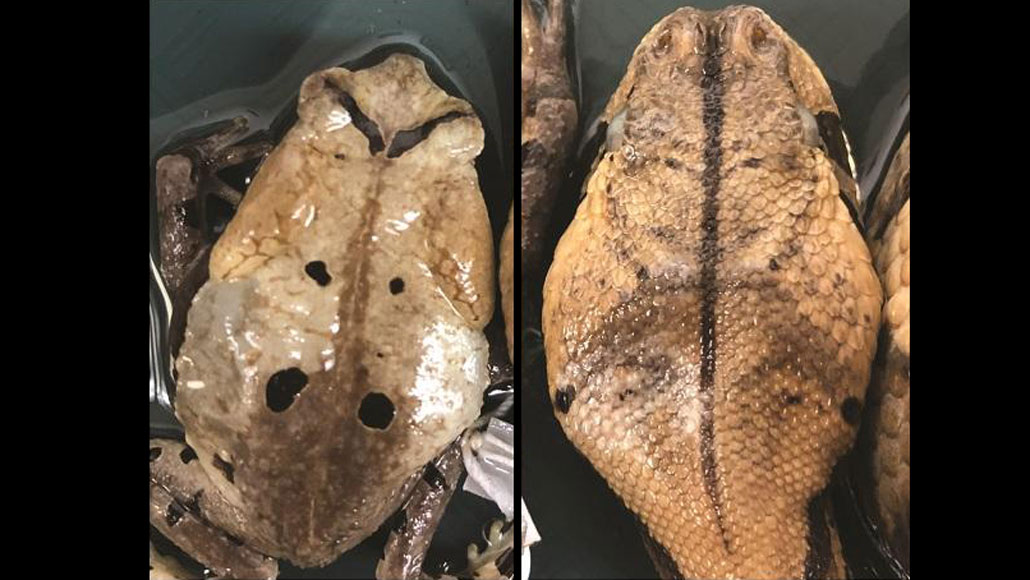
With their look-alike bodies and hissing noises, Congolese giant toads (one shown, left) might be mimicking Gaboon vipers (head shown at right) that share their territory.
E. Greenbaum

With their look-alike bodies and hissing noises, Congolese giant toads (one shown, left) might be mimicking Gaboon vipers (head shown at right) that share their territory.
E. Greenbaum